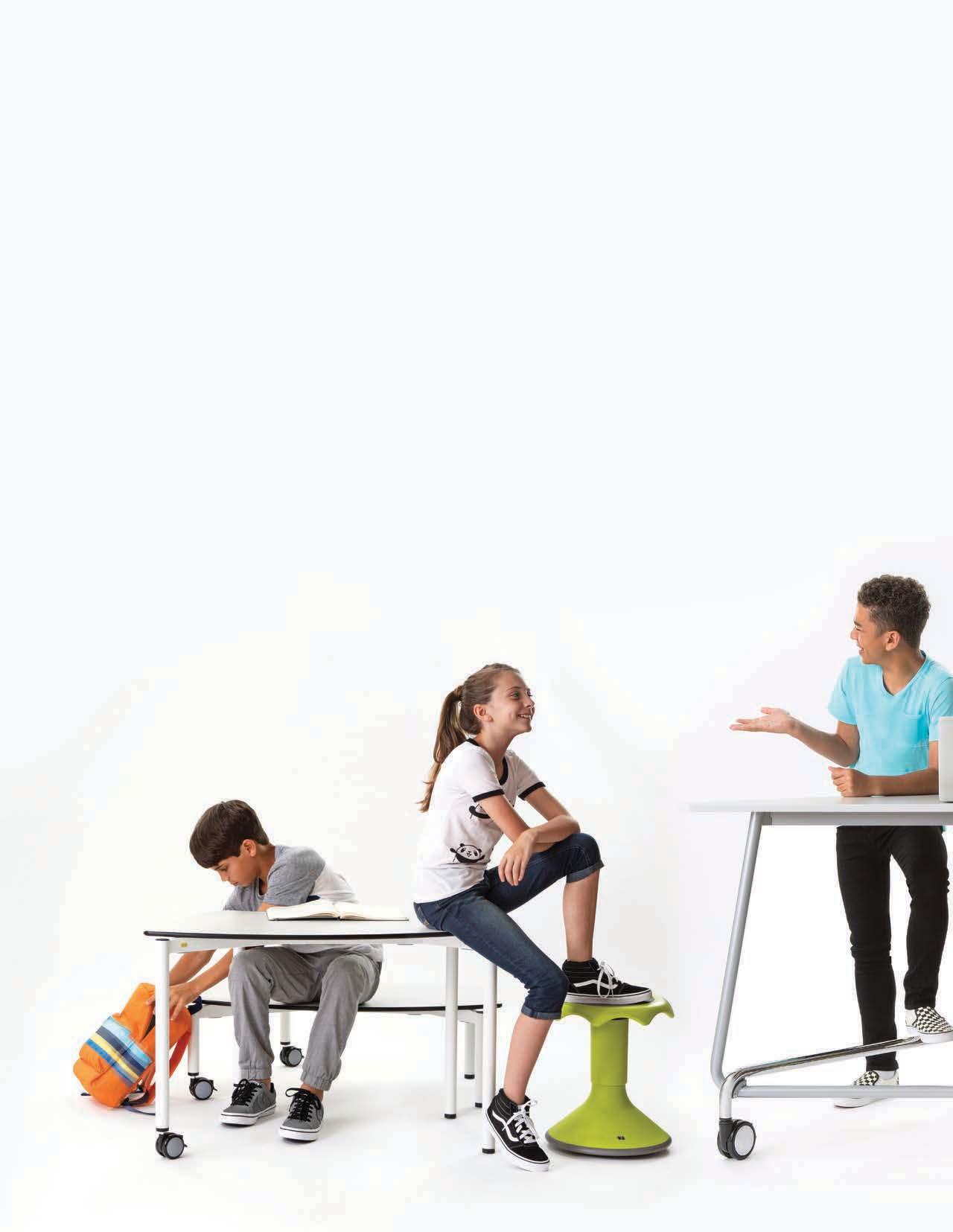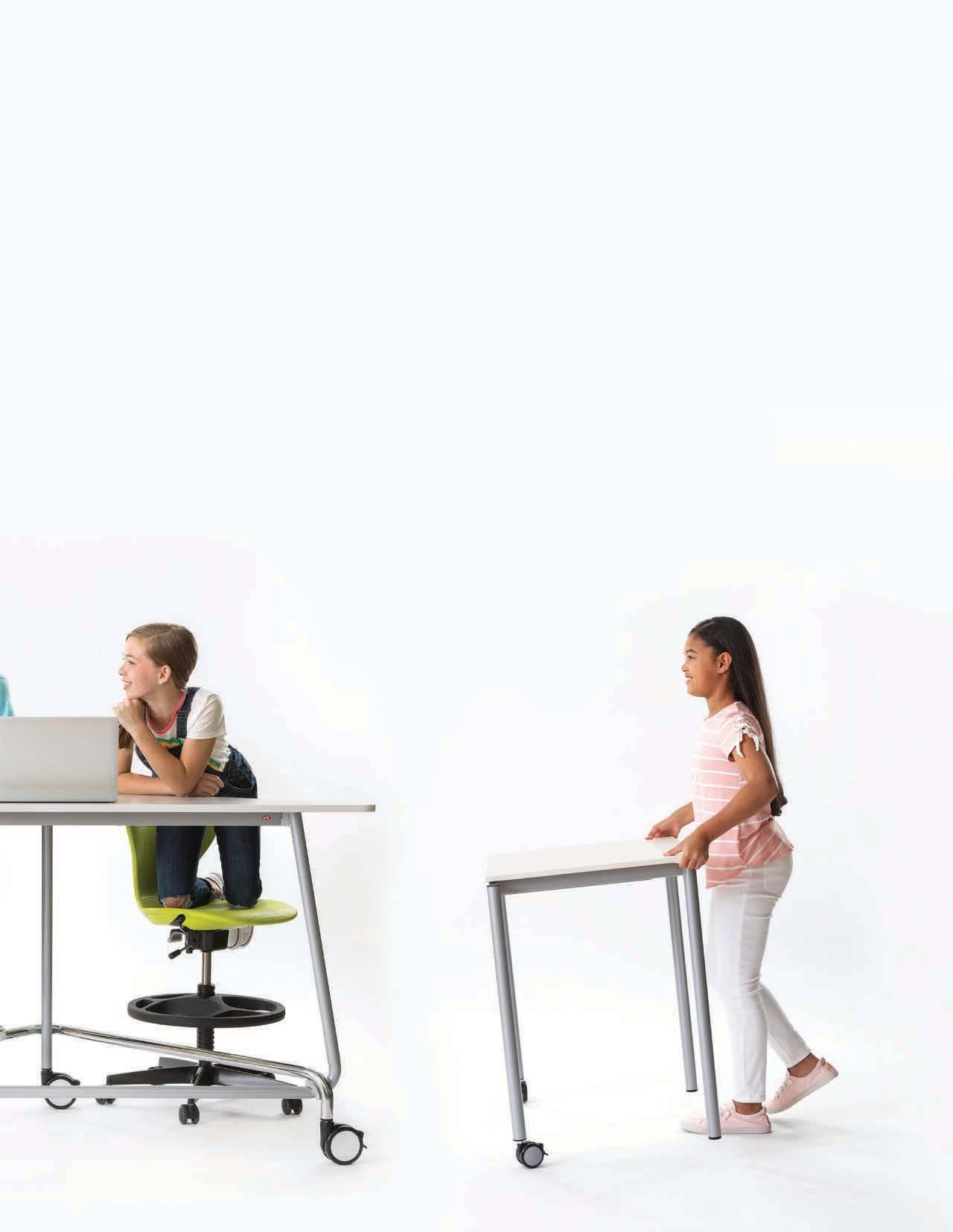
1 minute read
TABLES
Lightweight, easily height-adjustable tables promote physiologically positive sitting postures. They can be raised as students grow and therefore don’t need replacing over the school year. Individual tables on castors in different shapes can be combined with one another in many different ways and offer individual, rapid changes in forms of learning.
Tables that allow for standing
Standing tables and group standing tables with foot supports – very important for dynamic standing – are important basic furniture for indoor spaces. They encourage spontaneous posture changes (sitting/standing/standsitting). Accordingly, they should also be used for standing and not for continuous high sitting. High tables are particularly useful during group work. Ideal non-adjustable standing tables accommodate an average body height for the relevant age group, which means around 35 inches for 3rd to 7th graders and around 42 inches for 8th to 12th graders. Adapting the height precisely to individual users or a group for temporary use is not necessary. They’re flexible to accommodate a variety of tasks and can be combined for large or small groups. They can also can be moved on castors throughout the school.
Continuously adjustable high chairs with a 3D rocking mechanism and an adjustable foot ring are the perfect complement to standing desks. These can be used for intuitive sitting or stand-sitting, and facilitate eye-to-eye level communication. Rigid seats are not healthy choices and shouldn’t be specified.













